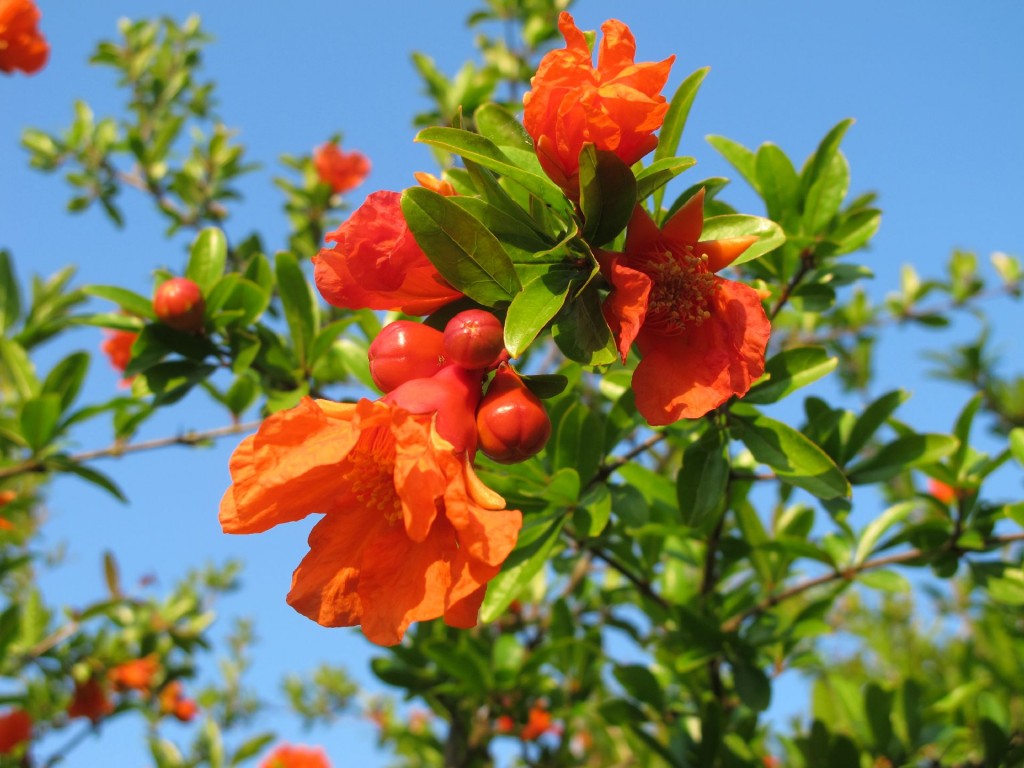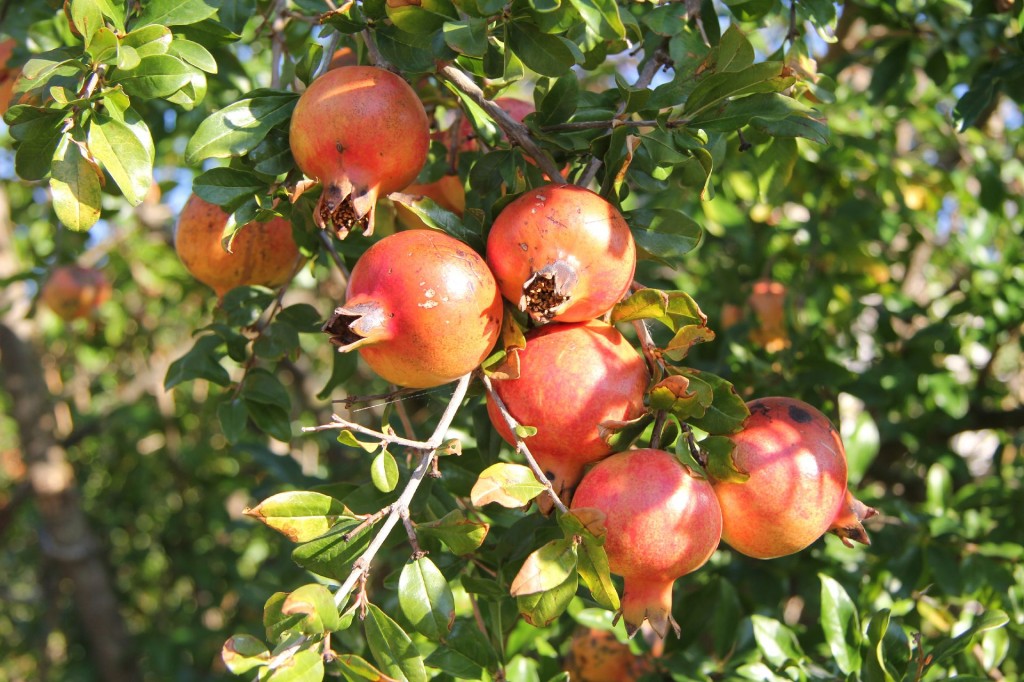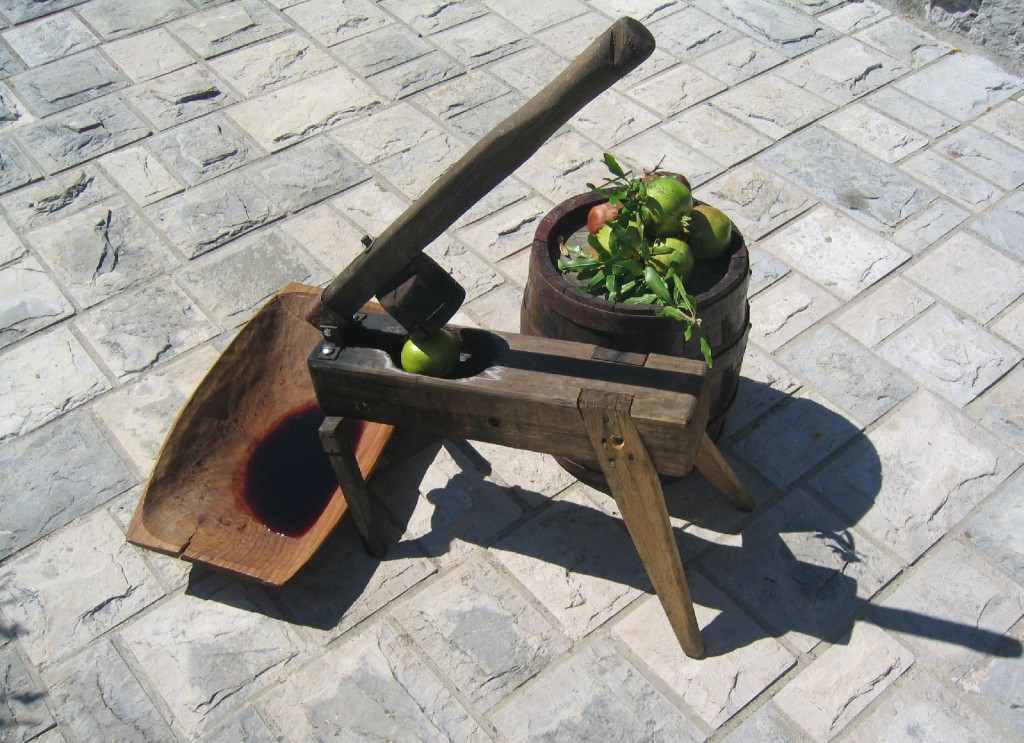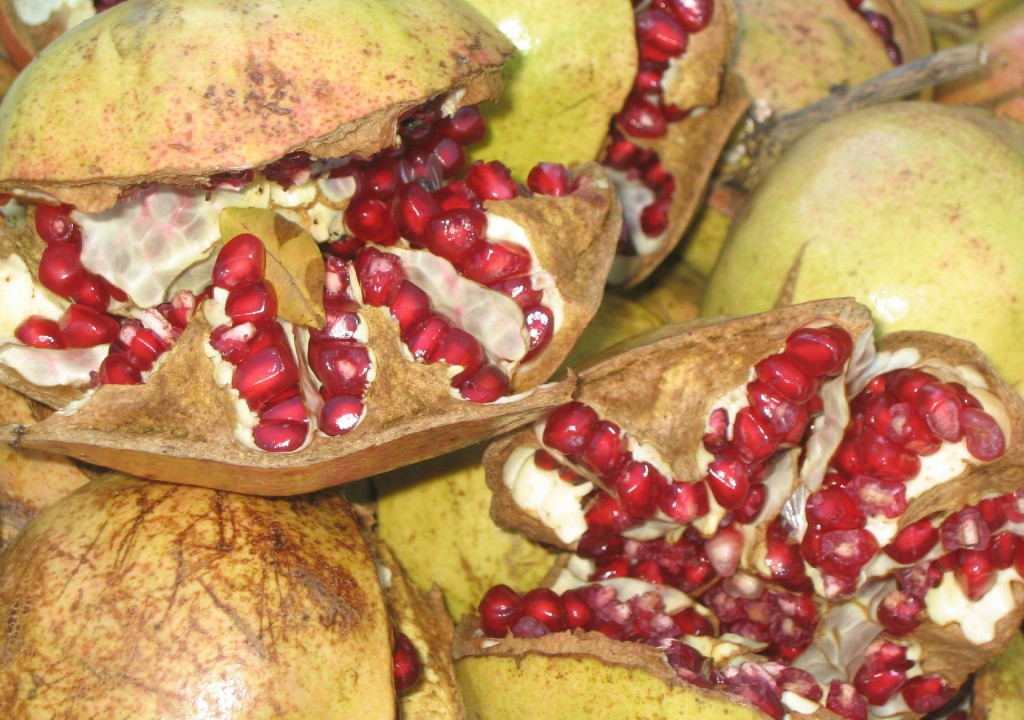 When I visited Montenegro for the first time, I had never seen a pomegranate. Montenegrin friends wanted to make fun of me and explained that I had to eat it as an apple. I took a bite … wow, what an unpleasant experience: the rind was very bitter! But soon I learned to appreciate this healthy fruit and especially the juice that is often made in the rural area of the country.
When I visited Montenegro for the first time, I had never seen a pomegranate. Montenegrin friends wanted to make fun of me and explained that I had to eat it as an apple. I took a bite … wow, what an unpleasant experience: the rind was very bitter! But soon I learned to appreciate this healthy fruit and especially the juice that is often made in the rural area of the country.
It is interesting to know that pomegranate (photo 1) is one of the oldest fruits mentioned in history, literature and folklore. It is native to Iran, from where it was actually brought to India and China more than 2000 years ago. It made its way to Italy via Carthago or „Punic“ as this city was called by the ancient Romans. Therein lies the root of its Latin name, Punica granatum. Ancient Romans did not only enjoy the succulent flesh of this fruit, they also tanned and used the rinds as a form of leather. Nowadays, the pomegranate continues to be a popular ingredient in the Mediterranean cuisine.
 It was the Moors who brought the fruit to Spain around 800 A.D. The city of Granada was named for it and the fruit appears in its shield. The fruit is also praised in the Qu’ran, the Bible and the Talmud. Moreover, the pomegranate is one of the old semitic symbols meaning a life of abundance and wealth, and in the Babylonian empire the fruit was served at weddings and represented the symbol of love and fertility.
It was the Moors who brought the fruit to Spain around 800 A.D. The city of Granada was named for it and the fruit appears in its shield. The fruit is also praised in the Qu’ran, the Bible and the Talmud. Moreover, the pomegranate is one of the old semitic symbols meaning a life of abundance and wealth, and in the Babylonian empire the fruit was served at weddings and represented the symbol of love and fertility.
In Montenegro, wild pomegranate thrives in the calcareous karst areas along the Adriatic Coast, around Skadar Lake and in other sunny places in the central and southern part of the country. It grows as an attractive shrub or tree from 2 to 6 meters high. It has many branches, more or less spiny, with glossy and oblong leaves. The showy flowers at the branch tips are bright red (photo 2) and the fruit is yellow overlaid with red, with a leathery rind (photo 3).
 The fruit of cultivated pomegranates is larger and sweeter than the wild species, in particular „Pomegranates from Bar“, which are grown on plantings round this town on the foothill of Mount Rumija. It seeds are very sweet and juicy and they are mostly eaten out of hand or at the table: the pomegranate is deeply scored several times vertically and than broken apart. Then the seeds can be shaken out of the rind and eaten. Montenegrins consider this not a laborious handicap but a social or family activity, prolonging the pleasure of dining or being together (photo 4).
The fruit of cultivated pomegranates is larger and sweeter than the wild species, in particular „Pomegranates from Bar“, which are grown on plantings round this town on the foothill of Mount Rumija. It seeds are very sweet and juicy and they are mostly eaten out of hand or at the table: the pomegranate is deeply scored several times vertically and than broken apart. Then the seeds can be shaken out of the rind and eaten. Montenegrins consider this not a laborious handicap but a social or family activity, prolonging the pleasure of dining or being together (photo 4).
Wild pomegranates contain a lot of citamine C. The fruits start to ripen from October and remain on the branch tips during the winter, if not picked. The seeds are tangy and are used for making juice, which is usually sweetened for beverage purposes. This juice is very popular in Montenegro, not only as a refreshing beverage, but also for its medical characteristics: it prevents colds, is used for treating diarrhea and dysentery and is also a tonic recommended to heart patients.
In the villages of South and Central Montenegro you can still find primitive, but very functional hand-made wooden presses, which are used for straining out pomegranates (photo 5). The extracted fresh juice is consumed after pressing or may be frozen for future use. Well-known is the Grenadine syrup that is prepared by boiling the juice with sugar.
 Finally I would like to give you some recipes:
Finally I would like to give you some recipes:
For Grenadine syrup you need 1 liter of pomegranate juice and 1 kg of sugar. Boil equal parts of juice with sugar until slightly thickened. Store in the fridge and drink cool, mixed with water. Can also be used for sauces.
For Pomegranate juice you need 1 liter of pomegranate juice, sugar or honey as needed. After pressing, freeze the filtered juice in plastic bottles in the freezer. Before use, unfreeze and mix with water, add honey or sugar as needed. Can also be used for various cocktails, etc.


[…] And finally the most beautiful autumn fruit: pomegranate (photos 6 and 7). If you want to know more about this delicious fruit, read my blog post: Everything you need to know about pomegranate. […]
[…] around Skadar Lake and Cetinje. We were just roaming along the narrow roads, edged by wild pomegranates (see also: Pomegranate: Symbol of Abundance and Fertility), junipers (photo 6) and the vibrant red […]